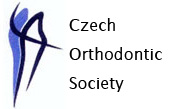
 Česká verze Česká verze
|
|
| Main Page | |
| Invitation | |
| Overview | |
| Schedule | |
| Honorary Lecture | |
| Pre-Congress Course | |
| Keynote Lectures | |
| Time table | |
| Registration | |
| Accommodation | |
| Information for authors | |
| Forms and documents | |
| Contacts | |
Interdisciplinary cooperation and careful planning in the treatment of cleft lip and palate patients
Prof. Anne Marie Kuijpers-Jagtman, D.D.S., Ph.D. 
Keynote Lecture - Saturday, September 24, 2011
The health-care burden of children with clefts and their families is high. Nowadays the treatment history often starts with prenatal counselling of the parents as soon as a cleft lip and palate deformity of the fetus has been detected by ultrasound. Treatment continues from birth until maturity involving, amongst other, feeding counselling and clinical nursing, several surgeries to close the defect, genetic screening, speech and hearing assessments, management of middle ear infections, orthodontic and facial orthopaedic management, speech interventions, psychological counselling, and dental and prosthodontic care.
There has been consensus since the early 1950s that children with clefts need comprehensive, coordinated care by an interdisciplinary team. The team should function as an organization with a general policy for the treatment, and each member of the team should have an understanding of the different aspects of treatment. The principal role of the interdisciplinary cleft lip and palate team (CLP team) is to provide integrated care for children with clefts and to assure quality and continuity of patient care and longitudinal follow-up.
I will present long term results of CLP treatment with special emphasis on the diffi culties the orthodontist is confronted with while treating these patients.
| General Partners |

|

|
| Partners |

|

|

|